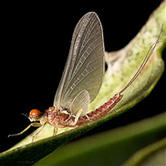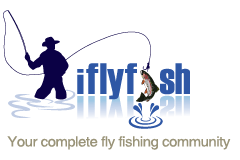Entomology Search
Entomology is the study of insects and their form and behavior. Interest in insects goes way back to prehistoric times, however the scientific inquiry into insects didn't begin until the 16th Century. Some of the more notable entomologists included Albrecht Durer, and Charles Darwin with many others over the ages.
Ever since the first fly rod was cast, fisherman have sought to understand the natural food chain. Knowing the food sources, imitating them with flies, then fooling the fish in taking the imitated fly's are all marks of a good flyfisher.
The understanding of entomology and a basic knowledge of rivers, lakes, marshes , and the food they hold is important. This section outlines the aquatic insects and vertebrates, molluscs, crustaceans, and anything else that features significantly in a fishes diet and that are targeted by the flyfisher.
Over the next few months this section will be available for members to add information to this great resource for other community members to share.

Select an Insect or Other Food Form:
The Basics
The most abundant aquatic insects are Mayflies, Caddisflies, Midges, Stoneflies, damselflies and draonflies. The life cycle for these insects include an aquatic nymph stage, which eventually emerges onto the water's surface and hatches into a winged adult insect stage. These adults, which live only a few hours, days, or weeks, mate and lay their eggs on the water (egg stage) and then die.
Mayflies (Ephemeroptera)
Mayflies are a large, and very important group of delicate, harmless aquatic insects that live in rivers and lakes. The life cycle consists of egg, nymph, and adult stages. The nymph feeds and grows beneath the surface from periods of a few months to a year or two years it then swims to the surface when mature and hatches into the a dun. The winged dun, an air breather, flies off the water's surface, leaving its nymphal skin behind. The dun, after a short period-minutes to a day or so-sheds another skin and changes into the more vividly colored, sexually mature adult stage called the spinner. Spinners form a swarm and fly near or over the water and mate in the air. The females immediately fly down to the water's surface and lay their eggs on or below the surface. Both males and females die shortly after this activity.

 Get a Licence
Get a Licence

 Tell a Friend
Tell a Friend